Abstract 5/2019
Table of content
Robert Tomanek – Risks of exclusivity of instruments for sustainable urban mobility
Wojciech Kocot – Pre-emergency state of a road bridge in the mining areas
Piotr Ogórek, Mateusz Kulig, Anna Przeniczny – Adaptation of urban public transport systems to the needs of people with limited mobility, in particular to the needs of people with disabilities and the elderly
Maciej Grzywna – Evaluation of development of electric multiple units
Wioletta Binkowska, Anton Pashkevich – Issues of drivers’ working time in road transport: regulations, penalties, further directions of development
Abstracts
Robert Tomanek
Risks of exclusivity of instruments for sustainable urban mobility
Abstract: In the article the following instruments of sustainable mobility are discussed: preferences for pedestrian, electromobility in public and individual transport (using forms of collaborative consumption) and development of bicycle traffic. Sustainable mobility allows for sustainable development which is considered as an inclusive development. However, in specific national and local situations, application of these tools can lead to the exclusion of specific consumer groups. Therefore, local conditions should always be taken into account in the management of urban mobility. Sustainable mobility requires the use of diverse, carefully selected instruments for specific conditions.
Key words: mobility, sustainable mobility, electromobility, bike system, inclusive development
Wojciech Kocot
Pre-emergency state of a road bridge in the mining areas
Abstract: In connection with the planned mining exploitation, it was necessary to check the technical condition of the bridge and its resistance to mining influences. During the local inspection, it turned out that due to the current mining exploitation, the analyzed bridge was in a pre-emergency state, what has not been perceived by the person making routine periodic inspections provided for by the construction law. In the article the reasons of the occurrence of irregularities and proposed a method of performing the repair have been analyzed. The proposed reparation is also a preventive protection for mining influences. The conclusions pointed to the necessity to cover bridge objects located in mining areas with the supervision of a specialist in the field of construction in mining areas both before mining and during the disclosure of its impact.
Key words: bridge structures, bridges in mining areas, mining influences, mining damages
Piotr Ogórek, Mateusz Kulig, Anna Przeniczny
Adaptation of urban public transport systems to the needs of people with limited mobility, in particular to the needs of people with disabilities and the elderly
Abstract: An important group of travelers in public city transport are people with limited mobility, who should have access to the public transport at the same level as everybody has. This group includes people with disabilities of movement, limitation in hearing or sight as well as elderly people, pregnant women and careers with small children. This article presents the results of the analysis of public transport in the cities of the Małopolska Voivodeship in terms of adapting to the needs of people with mobility problems. The analysis is based on the data from surveys conducted in cities with local public transport operating.
Keywords: public transport, people with limited mobility, accessibility
Maciej Grzywna
Evaluation of development of electric multiple units
Abstract: Over the years, a clear division of rail passenger transport into three segments has developed, which condition the application of appropriate construction solutions that meet the variable operating conditions depending on the hierarchy of transport segment. Modern vehicles are characterized by high safety, distributed drive along the entire length of the vehicle, modular construction, low own weight, low energy consumption, adequate accessibility for people with reduced mobility and compliance with the relevant TSI subsystems. There is a tendency to produce vehicle families as universal as possible, equipped with standardized components, which can be adapted to the requirements of a specific order with a small financial outlay. Despite the solutions available on the market, some entities ordering electric multiple units incorrectly formulate the TOR, as a result of which delivered vehicles are equipped with wrong components, an arrangement of their interior makes it difficult to exchange passengers during commercial stops, and the same arrangement of the equipment affects the length of service and thus causes increase in costs, including maintenance of an expensive rolling stock reserve. Insufficient research on the demand for transport services results in the purchase of units with improper capacity, which means that in next years it is necessary to combine them in multiple traction.
Key words: rail vehicles, electric multiple units, construction of rail vehicles, standardization of rail vehicles, ease of handling of railway vehicles
Wioletta Binkowska, Anton Pashkevich
Issues of drivers’ working time in road transport: regulations, penalties, further directions of development
Abstract: Planning, registration and controlling drivers’ working time are important and difficult tasks that companies dealing with the road transport carriage of cargo and passengers face on a daily basis. The working time of drivers, on the one hand, is related to the efficiency of contract performance and consequently the impact on remuneration, on the other hand, it has a direct impact on the road safety. Therefore, the regulations on the road safety are subject to numerous amendments and the National Labor Inspectorate and the Road Transport Inspectorate supervises their observance. In this article, apart from the review of the main legal acts regulating the drivers’ work time and the penalty for non-compliance with these provisions, a case study was presented on the analysis of the possible consequences of violating this right on the example of a selected transport company.
Key words: road transport, drivers’ working time, transport law

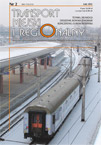 SITK RP
SITK RP 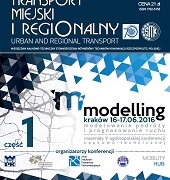 SITK RP
SITK RP 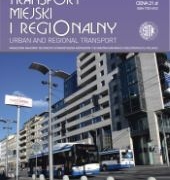 SITK RP
SITK RP 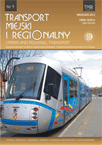 SITK RP
SITK RP 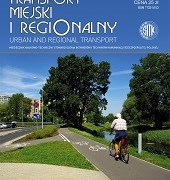
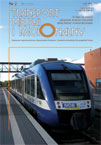 SITK RP
SITK RP 

